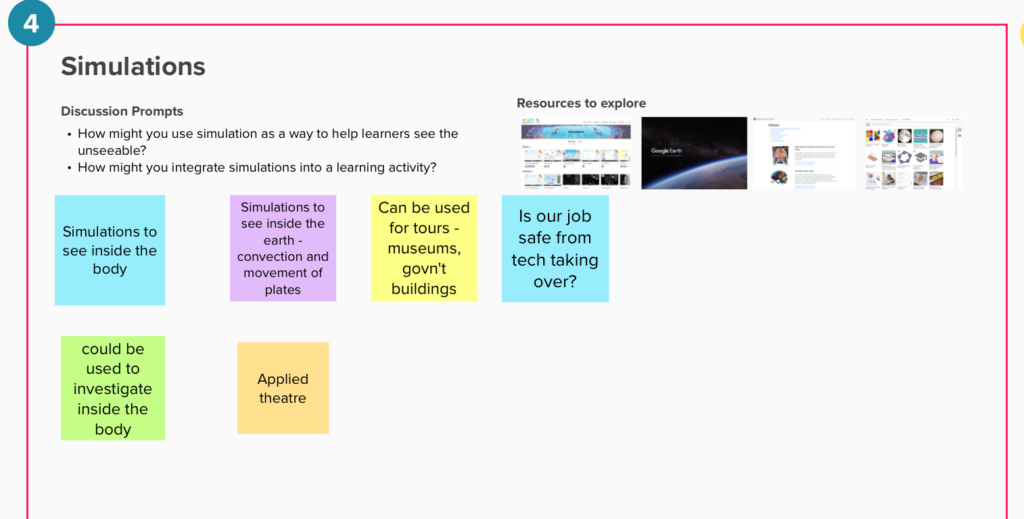
This week in EdTech, we were introduced to ‘MURAL Board,’ and my group discussed the topic of simulations used in the classroom. We all agreed that simulations could be useful to help learners see things that would be difficult to see in person. Particularly in science, simulations can be used to see how the aspects of the body work, such as how blood flows through the body. Simulations could also be used for Earth Sciences, seeing how the inside of the Earth uses convection to move plates, how ridges and mountains are formed, and how volcanoes erupt and earthquakes occur. Rick also had the idea that simulations could also be used in applied theatre. The issue with simulations is making sure you find one that is accurate. There are misconceptions around science, and I have come across simulations that were not exactly correct and supported those misconceptions. If I could find the link to that simulation, I would have posted it with the blog, but unfortunately (or I guess it’s for the best), that simulation is no longer available. So, to wrap up our discussion on simulations being used in the classroom, we agree they can be beneficial and a great way to see and engage with the “unseeable.” However, you have to be careful about what simulations you use and make sure they are accurate representations of what you want your students to learn. Below is a link to a bunch of simulations. Some are older, and therefore do not work, but there are a lot to go through in many science and math topics.
https://phet.colorado.edu/en/simulations/filter?type=html&sort=alpha&view=grid
Leave a Reply
You must be logged in to post a comment.